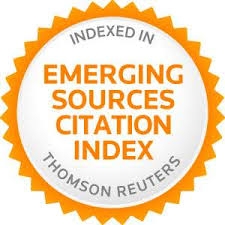Educación compensatoria: efectos recientes de un estudio clásico (High/Scope)
Resumen
Palabras clave
Texto completo:
PDFReferencias
Bereiter, C. (1986). Does direct instruction cause delinquency?. Early Childhood Research Quarterly, 1(3), 289-292.
http://dx.doi.org/10.1016/0885-2006(86)90036-0
Bereiter, C. y Engelmann, S. (1977). Enseñanza especial preescolar. Barcelona: Fon-tanella. Traducción de Carl Bereiter y Siegfried Engelmann (1966). Teaching disadvantaged children in the pre-school,Englewood Cliffs, N.J.: Prentice-Hall.
Berrueta-Clement, J.R., Schweinhart, L.J., Bamett, W.S., Epstein, AS. and Weikart, O.P. (1984). Changed Lives: The Effects o the Perry Preschool Program on Youths Through Age 19. (Monographs of High/Scope Educational Research Founda-tion, No. 8.) Ypsilanti, MI: High/Scope Press.
Gerstein, R. (1986). Response to "consequences of three preschool curriculum models through age 15". Early Childhood Research Quarterly, 1(3), 293-302.
http://dx.doi.org/10.1016/0885-2006(86)90037-2
Hohmann, M., Banet, B. y Weikart, D.P. (1979: 1984). Niños pequeños en acción. Manual para educadoras. México: Trillas.
Hunt, J. McV. (1969). Has Compensatory Education Failed: Has it Been Attempted?. Harvard Educational Review. Reprint series no. 2:130–150.
Jensen, AR (1969). How much can we boost IQ and scholastic achievement?. Harvard Educational Review, 39, 1-123.
López López, E. (1986). Programas de intervención en Educación Compensatoria. Bordón, XXXVIII (264), 651-676.
OCDE (2005). Education at a glance. OECD indicators 2005. Executive summary. Paris: OECD.
Schweinhart, L. J. (2000). High/Scope Pre-school Studies. High/Scope Educational Re-search Foundation (313) 485-2000.
Schweinhart, L. J. (2003). Using preschool research to facilitate change, High/Scope Educational Research Foundation, 734, 485-2000. (http://www.highscope.org/).
Schweinhart, L. J. (2005). The High/Scope Perry Preschool Study to age 40, High/Scope Research Foundation, Cfr. (http://www.highscope.org/).
Schweinhart, L. J. (2005 a). The High/Scope Perry Preschool Study through age 40. Summary, conclusions, and frequently asked questions, High/Scope Educational Research Foundation, Ypsilanti: Michigan, 19 pp.Schweinhart, L. J. y Weikart, D. P. (1997). Lasting Differences: The High/Scope Preschool Curriculum Comparison Study Through Age 23. Ypsilanti, MI: High/Scope Press, Soft cover, 120 p.
Schweinhart, L. J. y Weikart, D. P. (1997). The High/Scope Preschool Curriculum comparison Study through age 23. Early Childhood Research Quarterly, 12(2), 117-143.
http://dx.doi.org/10.1016/S0885-2006(97)90009-0
Schweinhart, L. J. y Weikart, D. P. (1997a). Lasting differences: The High/Scope Pre-school Curriculum Comparison Study through age 23, Ypsilanti, MI: High/Scope Press, 120 pp.
Schweinhart, L. J., Barnes, H. V. y Weikart, D. P. (1993). Significant benefits: The High/Scope Perry Preschool study through age 27 (Monographs of the High/Scope Educational Research Foundation, 10). Ypsilanti: High/Scope Press.
Schweinhart, L. J., Montie, J., Xiang, Z., Barnett, W. S., Belfield, C. R., & Nores, M. (2005). Lifetime effects: The High/Scope Perry Preschool study through age 40. (Monographs of the High/Scope Educational Research Foundation, 14). Ypsilanti, MI: High/Scope Press.
Schweinhart, L. J. and Weikart, O.P. (1980) Young Children Grow Up: The Effects of the Perry Preschool Program on Youths Through Age 15. (Monographs of the High/Scope Educational Research Foundation, 7.) Ypsilanti, MI: The High/Scope Press.
Schweinhart, L. J.; Weikart, D. P. y Larner, M. B. (1986). Consequences of three pre-school curriculum modelos through age 15. Early Childhood Research Quarterly, 1, 15-45.
http://dx.doi.org/10.1016/0885-2006(86)90005-0
Stevens, J. H. y King, E. W. (1987). Administración de programas de educación temprana y preescolar. México: Trillas.
Weikart, O.P., Bond, J.T. and McNeil, J.T. (1978) The Ypsilanti Perry Preschool Project: Preschool Years and Longitudinal Results Through Fourth Grade (Monographs of the High/Scope Educational Research Foundation, 4). Ypsilanti, MI: High/Scope Press.
Enlaces refback
- No hay ningún enlace refback.


